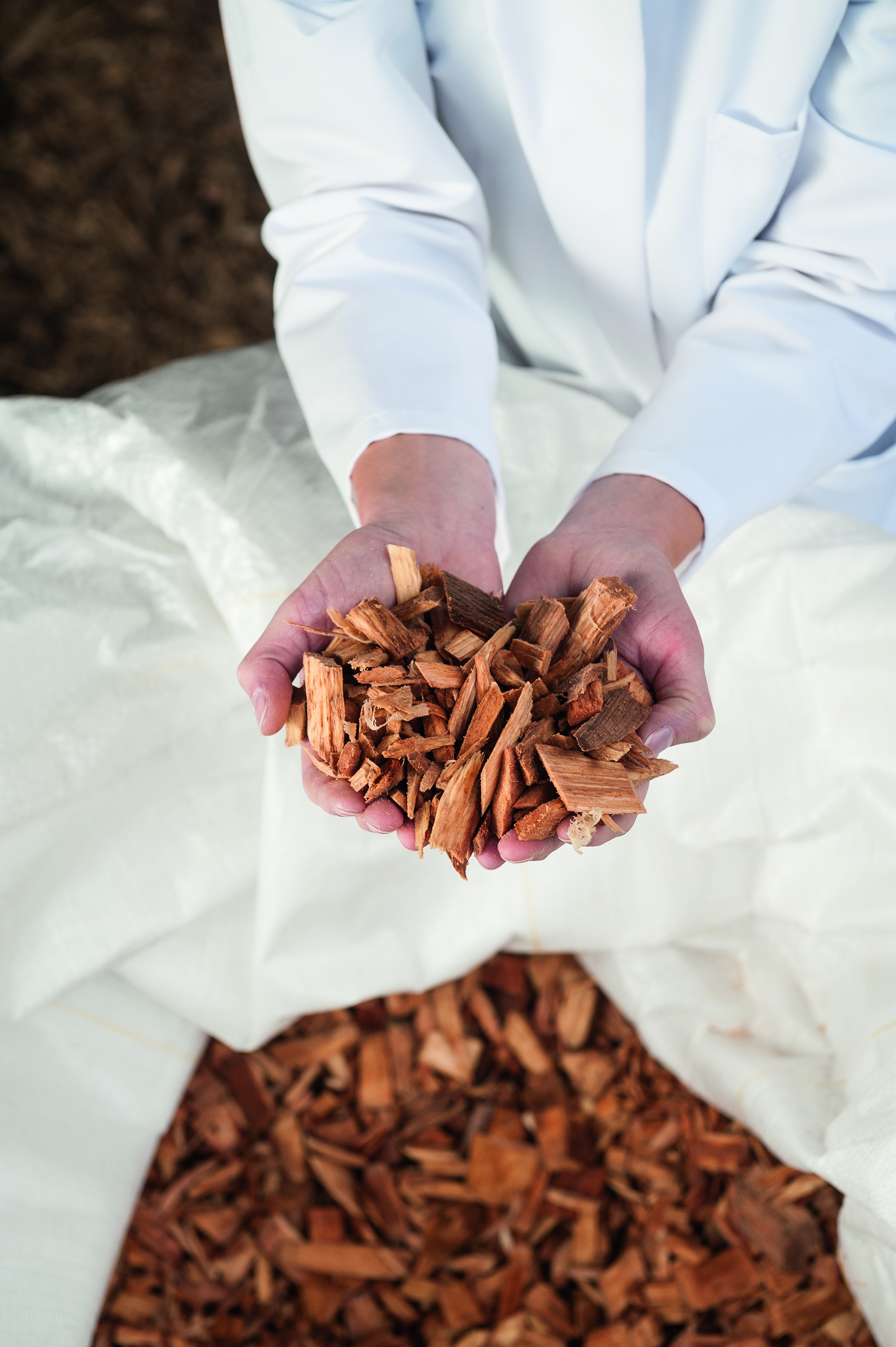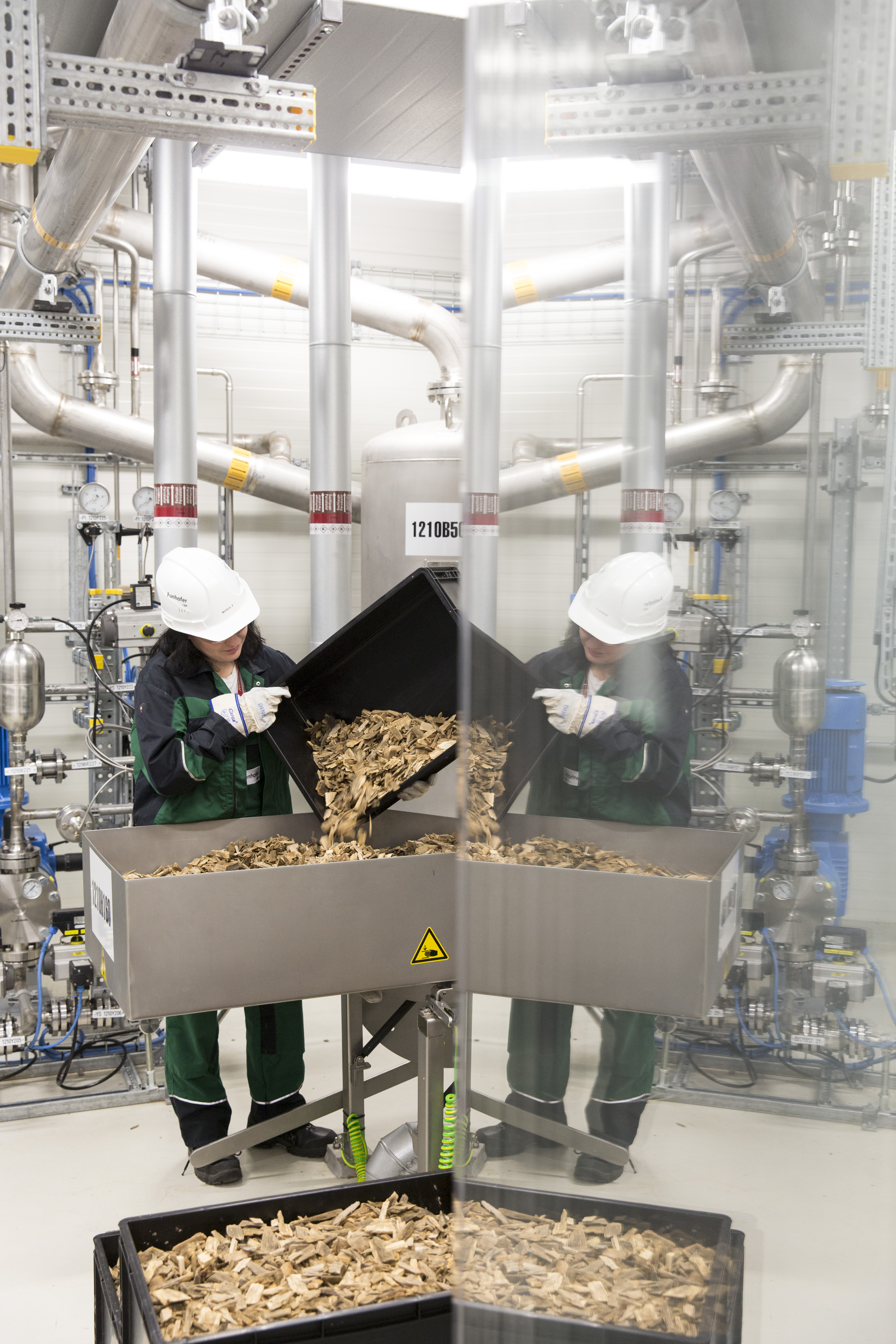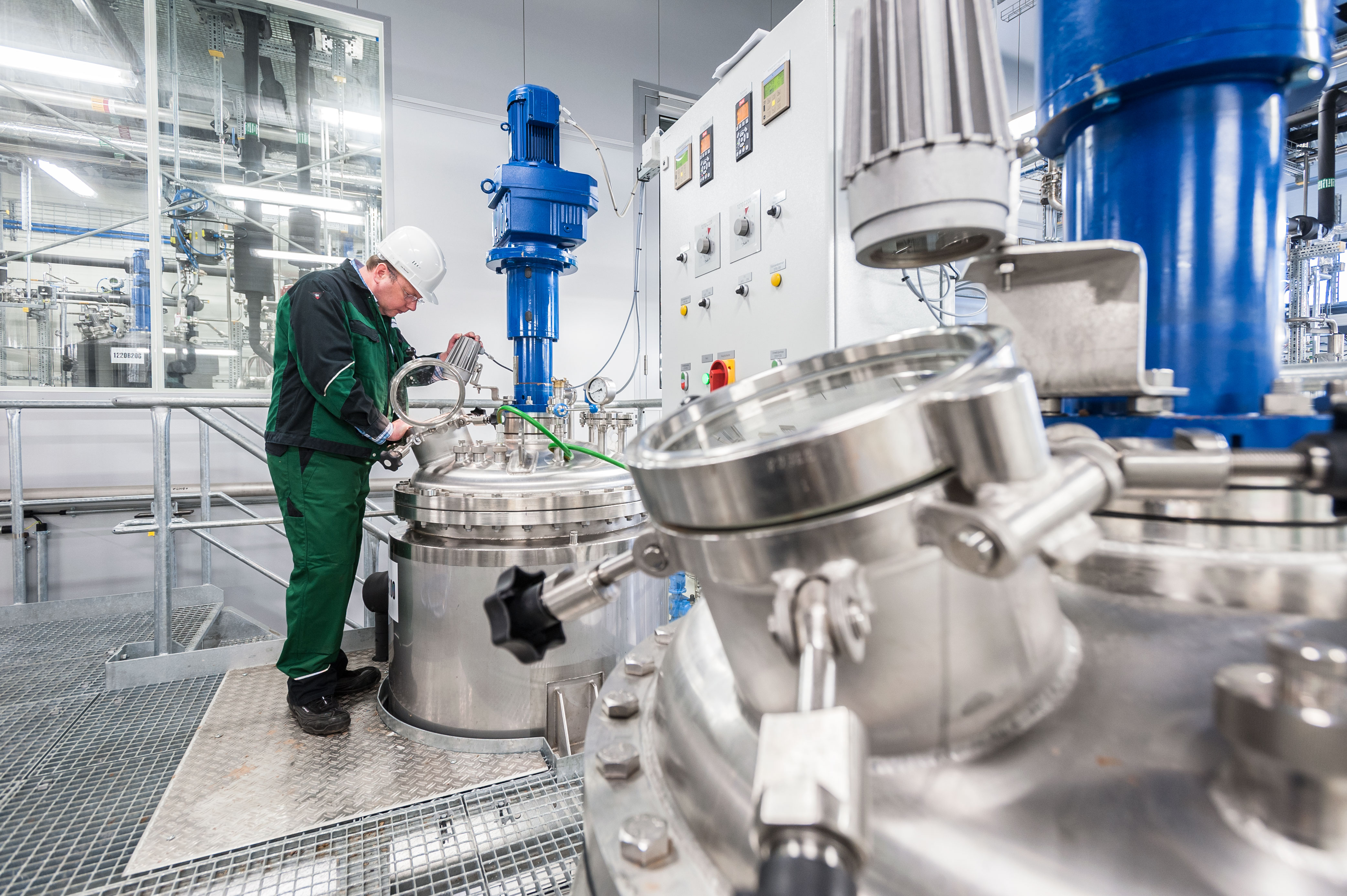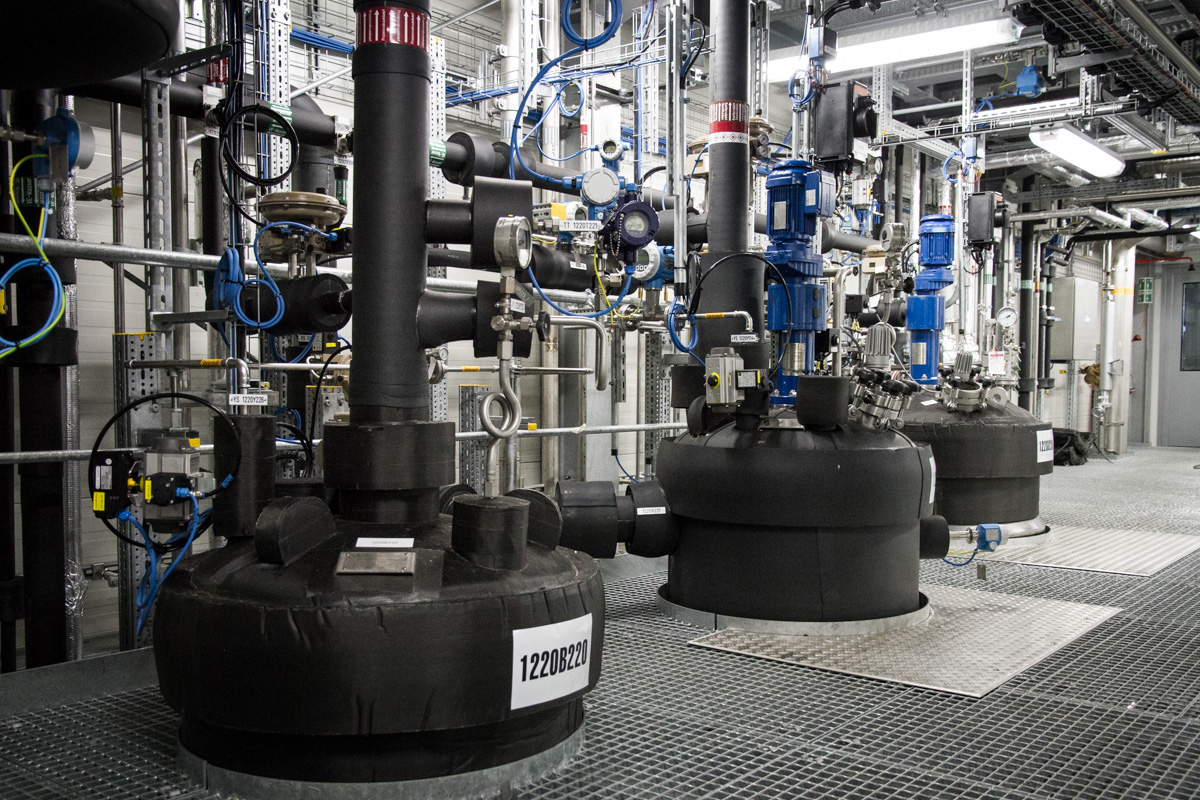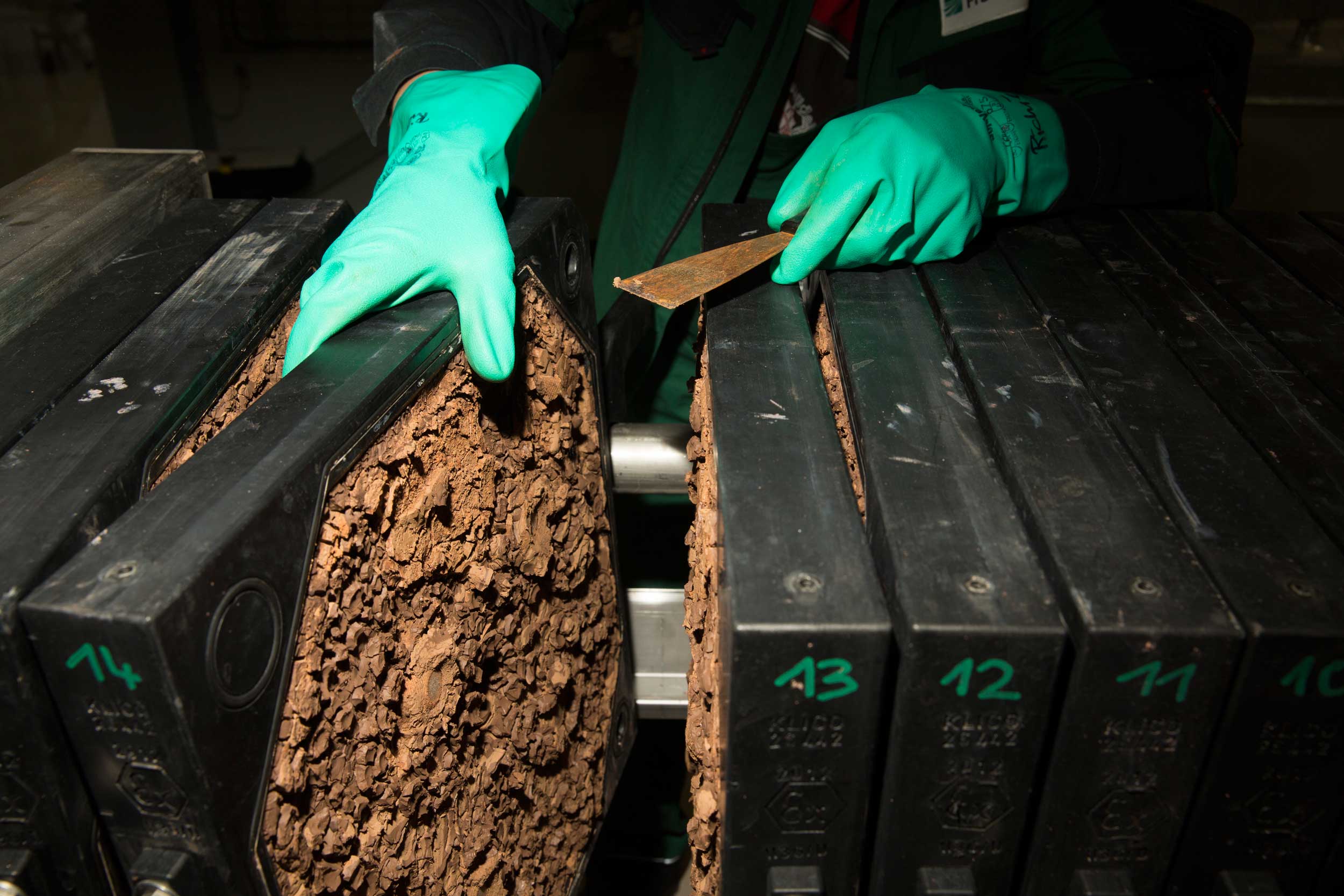The plant reproduces a large number of individual process steps for the production of fibrous materials, concentrated sugar solutions and lignin. Up to 70 kilograms of wood or 20 kilograms of stalks can be processed per batch. The facility was designed in such a way that the material and energy cycles are closed and therefore mass balances can be determined.
Organosolv process and products
The pilot plant includes a digester to separate the pulp from lignin and hemicellulose. The liquid phase is treated using a patented distillation process to precipitate the lignin.
The Organosolv lignin obtained has high-grade properties, making it suitable for applications in pharmaceuticals or cosmetics, among others.
The remaining hemicellulose solution can be further processed by hydrolysis and the resulting sugar solution concentrated by evaporation to be used in fermentation as a nutrient for microorganisms or as a raw material for biofuels.
Thermal processing of different raw materials through universal design
Due to the universal design of the pilot plant, other pulping processes for lignocellulose can be optimized on a pilot scale in addition to the Organosolv process, e.g. aqueous hydrolysis and digestion using acid or the soda process.
Balancing and utilization of individual process modules
The process is fully automated and data documented for balancing the processes. By using individual process engineering units in the plant, questions in the area of thermal separation technology and extraction can also be dealt with. There is strong interaction here with the "Downstream processing" field of competence.
 Fraunhofer Center for Chemical-Biotechnological Processes CBP
Fraunhofer Center for Chemical-Biotechnological Processes CBP